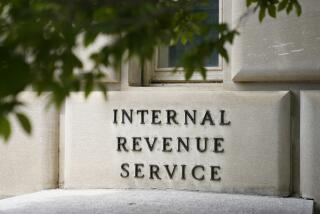Protecting an elderly mother’s assets
- Share via
Dear Liz: Could you advise us on how to protect our 93-year-old mother’s assets if she should become ill or die? She does not have a living will or a trust regarding her two properties.
Answer: “If” she should become ill or die? Your mother has been fortunate to have had a long life, presumably without becoming incapacitated, but her luck can’t hold out forever.
Your mother needs several legal documents to protect both herself and her assets. Perhaps the most important are powers of attorney for healthcare and for finances. These documents allow people she designates to make medical decisions and handle her finances for her should she become incapacitated. In addition, she may want to fill out a living will, which would outline the life-prolonging care she would and wouldn’t want if she can’t make her wishes known. (In some states, living wills are combined with powers of attorney for healthcare, and in others they are separate documents.)
These legal papers aren’t important just for the elderly, by the way. You should have these too, since a disabling illness or accident can happen to anyone.
Your mother also should consider a will or a living trust that details how she wants to parcel out her estate to her heirs. Of the two documents, wills tend to be simpler and cheaper to draft, but a living trust means the court process known as probate can be avoided. The probate process is public, and in some states (particularly California) it can be protracted and expensive. A living trust also could make it easier for someone to take over managing her finances in case of incapacity or death.
You can find an attorney experienced in estate planning by contacting your state’s bar association. Expertise and competence are important, so you may want to look for a lawyer who is a member of the American College of Trust and Estate Counsel, an invitation-only group that includes many of the best in this field.
If she or you are trying to protect her assets from long-term care or other medical costs, you’ll need someone experienced in elder care law to advise you. You can get referrals from the National Academy of Elder Law Attorneys at https://www.naela.org.
Moving an IRA to a 401(k)
Dear Liz: I have one comment in response to the reader who wondered whether she had to take minimum distributions from an IRA at age 70 1/2 even though she was still working. As you pointed out, she can defer taking minimum distributions from a 401(k), but she must take them from her IRA. I would point out that many 401(k) plans permit transfers from IRAs. Once the IRA becomes part of the employer plan, the transferred assets are no longer subject to required minimum distributions, as long as the employee continues working full time. This may be a viable option for someone who wants to delay or reduce the size of a mandatory IRA withdrawal.
Answer: Many people are familiar with the idea of rolling a 401(k) balance into an IRA when they leave a job. They may not realize they can roll money the other way as well if an employer permits it.
There are still several issues to consider before you transfer IRA money into a 401(k), said Mark Luscombe, principal analyst for CCH Tax & Accounting North America.
First, the rollover may not include any non-deductible contributions to the IRA. If the money in the IRA came entirely from tax-deductible contributions or from a 401(k) rollover, this won’t be a problem. If you made non-deductible contributions, they wouldn’t be eligible for transfer into a 401(k), Luscombe said.
“All of the sums rolled into the 401(k) plans must be funds subject to tax and not sums representing basis in the IRA,” Luscombe said. “If non-deductible contributions were made, only the taxable portion of the IRA may be rolled into the 401(k) plan.”
Another issue is that 401(k)s typically offer fewer investment choices than IRAs. Also, compare the fees with what you’re paying with your IRA. Some 401(k)s are run efficiently and give workers access to extremely inexpensive institutional funds, for example, while others lard on various account fees.
A final issue is that you’re likely to have less access to the funds in your 401(k) than you would with an IRA, Luscombe said, should you need to tap the cash. Many plans allow only hardship withdrawals from 401(k)s, although you may be able to access up to half of your funds with a retirement plan loan. Of course, if your intention is to delay required minimum distributions as long as possible and you won’t need the money, this point may not be a deal breaker.
Questions may be sent to 3940 Laurel Canyon, No. 238, Studio City, CA 91604, or by using the “Contact” form at asklizweston.com. Distributed by No More Red Inc.
More to Read
Inside the business of entertainment
The Wide Shot brings you news, analysis and insights on everything from streaming wars to production — and what it all means for the future.
You may occasionally receive promotional content from the Los Angeles Times.










